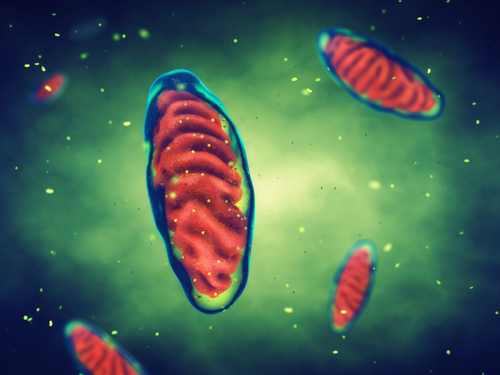Researchers discover mitochondria-to-nucleus messenger protein
Boston University School of Medicine Mar 06, 2018

Researchers have identified a protein, G-Protein Pathway Suppressor 2 (GPS2), that moves from a cell’s mitochondria to its nucleus in response to stress and during the differentiation of fat cells. While proteins with similar functions had previously been found in yeast and worms, this is the first direct messenger discovered in the cells of mammals.
Mitochondria regulate cell survival and metabolism. They are often called the powerhouse of the cell because they take in oxygen and nutrients, break them down and create energy-rich molecules for the cell. This is essential for cells and tissues to function properly and defects in mitochondrial functions and number are linked to aging and chronic diseases, such as cancer, obesity, type 2 diabetes, and neurological disorders.
Mitochondria are special organelles that contain their own DNA. However, the information they store is not sufficient to sustain their own activity or biogenesis. Instead, most of the genetic information for mitochondrial proteins is stored in the nuclear DNA. Thus, when the mitochondria are under stress, they need to communicate with the nucleus so that it can respond appropriately to help restore their activity or increase in number.
The researchers conducted their study in cell cultures and experimental models that had been genetically modified to lose the expression of GPS2. “Using a combination of imaging techniques, biochemical approaches, and next-generation sequencing experiments, we were able to show that the total number of mitochondria in the cells and the fat tissue without GPS2 was considerably lower than in the normal ones. We also showed that in absence of GPS2, cells were not able to recover when exposed to mitochondrial stress” explained corresponding author Valentina Perissi, PhD, assistant professor of biochemistry at BUSM.
Although these finding are primarily important for the basic understanding of cell biology and currently do not have direct translational implications, the ability to understand how mitochondria communicate their stress level and their energy status to the nucleus is an important step toward an understanding of how mitochondrial diseases arise and how they can be treated. Also, therapeutic and lifestyle interventions designed for combating obesity and improving insulin sensitivity often rely on increased mitochondrial activity in the adipose tissue. Thus, a better understanding of the molecular mechanisms that regulate the biogenesis of mitochondria could have important translational implications.
These findings appear online in the journal Molecular Cell.
-
Exclusive Write-ups & Webinars by KOLs
-
Daily Quiz by specialty
-
Paid Market Research Surveys
-
Case discussions, News & Journals' summaries
